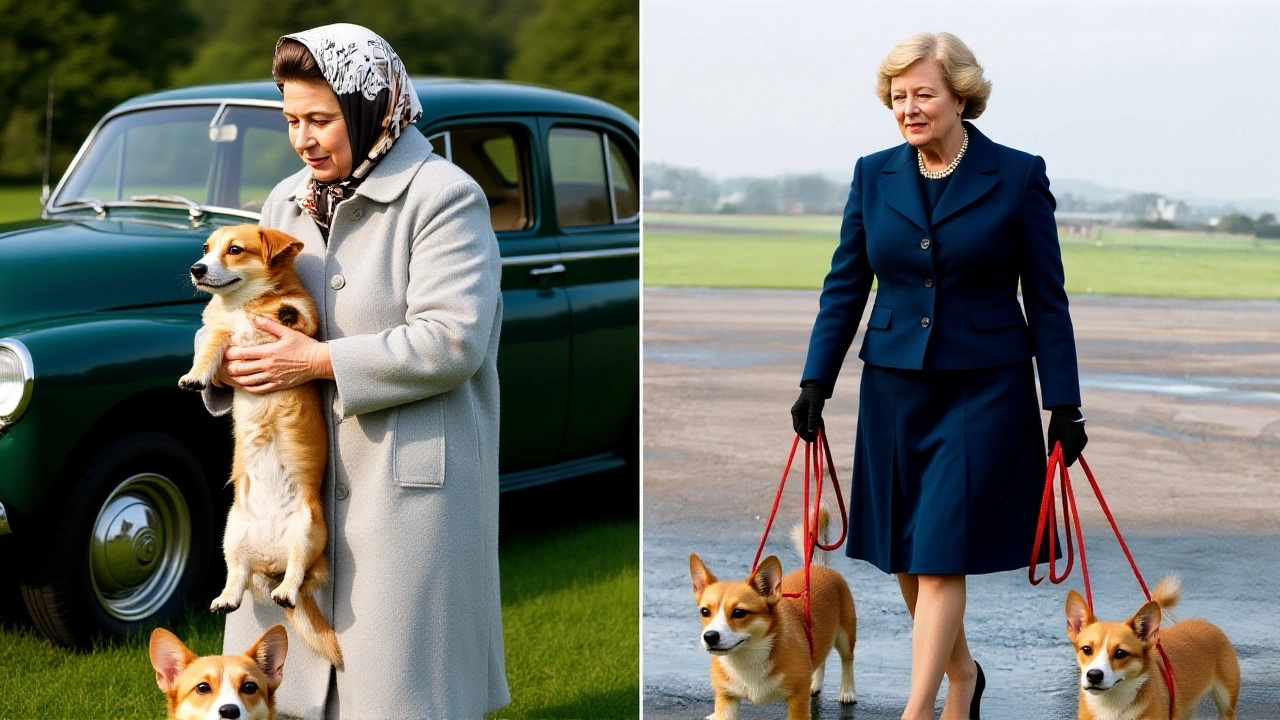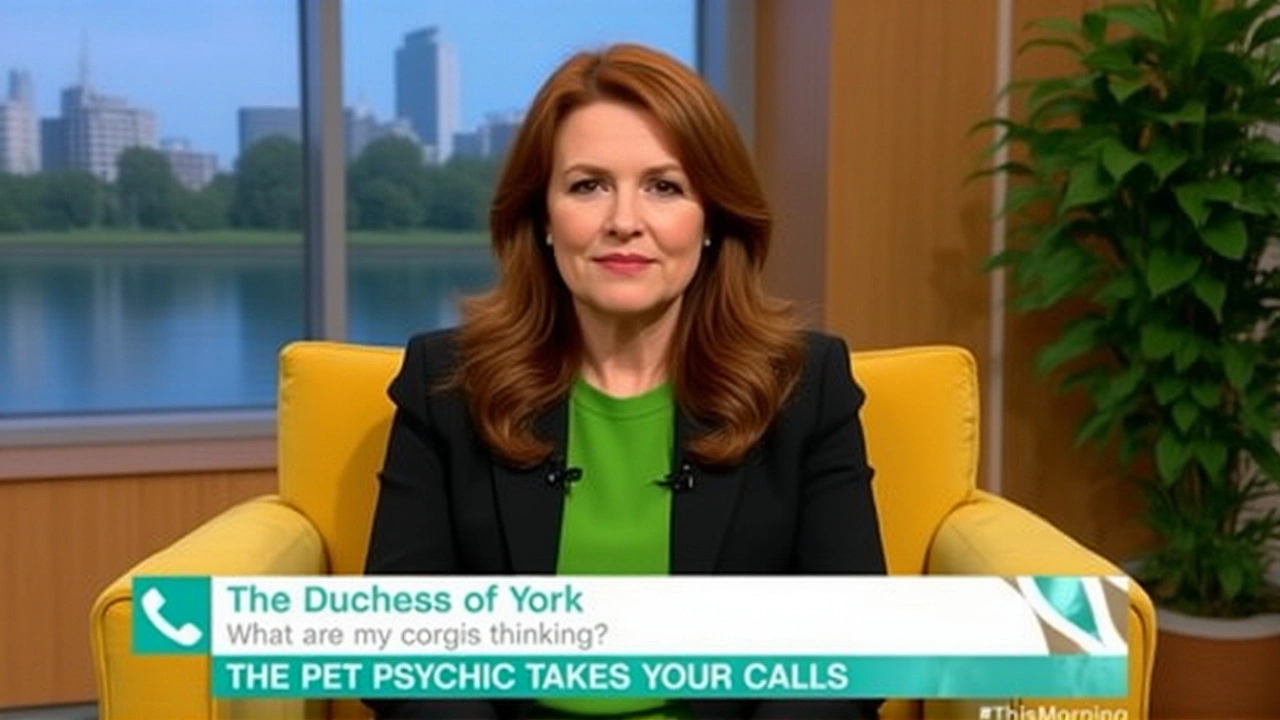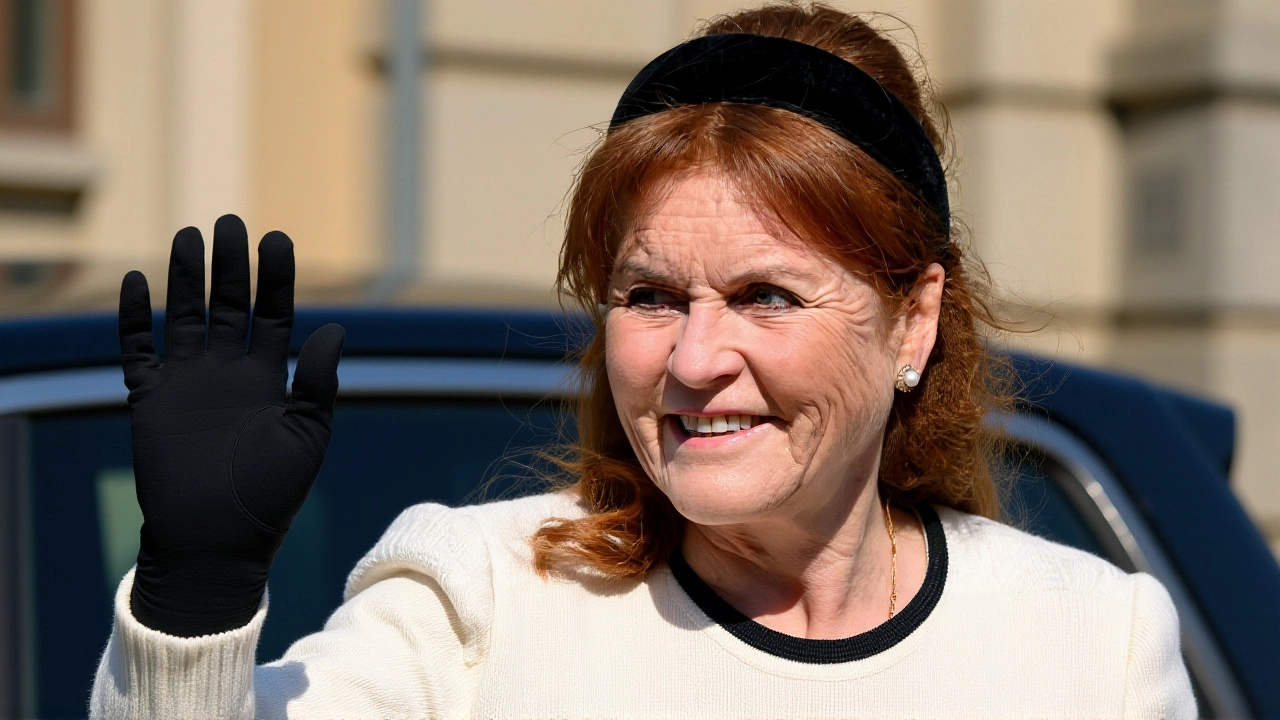When Sarah Margaret Ferguson stepped onto the stage at the Creative Women Platform Forum London on May 14, 2025, she didn’t talk about business strategies or female leadership—she talked about dogs. Specifically, the two Pembroke Welsh corgis left behind by Queen Elizabeth II: Muick and Sandy. "Every morning they come in and go 'woof woof' and I'm sure it's her talking to me," Ferguson said, her voice steady but eyes glistening. It wasn’t a joke. Not to her. And maybe, just maybe, not to the millions who watched.
More Than Just Pets—A Spiritual Link
Ferguson, who was married to Prince Andrew—now known legally as Andrew Mountbatten Windsor—has kept the corgis since the Queen’s death on September 8, 2022, at Balmoral Castle in Aberdeenshire. The two dogs, gifts from the Queen’s grandchildren and her son, were among the last companions of a monarch who once said, "My corgis are family." Ferguson, now living at Royal Lodge in Windsor, Berkshire, has seven dogs total. But Muick and Sandy? They’re different. "I had the greatest honour to be her daughter-in-law. That's pretty huge," she added, referencing the quiet, daily rituals that now feel sacred: morning walks, feeding times, the way Sandy curls up at the foot of her bed exactly as the Queen used to do with her own corgis.On the third anniversary of the Queen’s death, Ferguson posted a photo on Instagram of the two corgis napping side by side. The caption: "Her Majesty will be forever loved, always missed, and never forgotten. Not a day goes by when I don't think of the kindness I was unstintingly shown in good times and bad." It wasn’t performative. It was personal. And it resonated. The post got over 1.2 million likes. Comments flooded in: "I believe her," wrote one follower. "My late grandmother talks to me through our golden retriever. I get it."
The Corgi Legacy: A Royal Tradition
Queen Elizabeth II owned more than 30 corgis in her lifetime. Her first, Susan, was given to her on her 18th birthday in 1944 and accompanied her on her honeymoon with Prince Philip in 1947. By 2015, she stopped breeding them—afraid of leaving any behind. But after Prince Philip’s death in April 2021, her son Andrew gifted her Muick. Then, for her 95th birthday in 2021, Princesses Beatrice and Eugenie gave her Sandy. Both dogs were present in her final years, even appearing in the 2012 Olympic opening ceremony sketch with Daniel Craig. Willow, another corgi, had been retired before Sandy arrived. The Queen’s attachment was well-documented. So was the chaos corgis bring. Author Craig Brown called them "the Corleones of the dog world"—unpredictable, fiercely loyal, and occasionally, a nightmare to live with.But for Ferguson, they’re a bridge. A living, breathing connection to a woman who, despite the divorce in 1996, never cut ties. "She’d walk the dogs with me at Frogmore," a royal source told The Telegraph. "Even after the divorce, she’d call her ‘Sarah’—never ‘the Duchess’—and ask about their walks." That intimacy didn’t vanish with the marriage. It just changed form.

Who Gets the Corgis Now?
Here’s the twist: no one knows for sure. Buckingham Palace confirmed in early 2025 that "The corgis will remain with the family," but declined to specify whether that means Ferguson, Andrew, or the Princesses. Andrew, who reportedly plans to relocate to Sandringham, has been seen less frequently with the dogs. Ferguson, meanwhile, has made them central to her public persona. She posts daily updates, even naming them in her April 2025 International Pet Day tribute: "Happy International Pet Day to my seven sweet doggies!"But Royal Lodge’s 98 acres—once shared with Andrew—are now primarily Ferguson’s domain. A source close to the family told HELLO! Magazine that Andrew’s move to Sandringham is "in motion," and Ferguson is preparing a smaller, private home nearby. The corgis? They’re too old to be moved twice. Sandy is 12. Muick is 11. They’ve lived their entire lives under the Queen’s roof. Moving them now? Unthinkable.

Why This Matters Beyond the Royal Family
This isn’t just about dogs. It’s about grief, legacy, and how we keep the dead alive. In a world where digital memorials are replacing physical ones, Ferguson’s ritual—listening for a bark as a whisper from beyond—is strangely human. It mirrors what millions do: keep a loved one’s sweater, play their favorite song, talk to their photo. The difference? She’s doing it in public, with corgis who once trotted beside a monarch."I saw the Elizabeth Line on my way here," Ferguson said at the forum. "I want everyone to remember what an amazing lady she was." And in that moment, it wasn’t about royalty. It was about memory. About how love outlasts titles, and how even in death, the smallest creatures can carry the heaviest burdens of remembrance.
Frequently Asked Questions
Why does Sarah Ferguson believe the Queen communicates through the corgis?
Ferguson has spoken publicly about the daily routines she shares with Muick and Sandy, including their morning "woof woof" greetings, which she interprets as messages from the late Queen. She emphasizes the emotional bond she shared with Elizabeth II, noting that even after her divorce from Prince Andrew, the Queen maintained personal contact and allowed Ferguson to care for the dogs. This ongoing ritual, combined with the dogs’ direct lineage from the Queen’s own pets, reinforces her belief in a spiritual connection.
Who owns Muick and Sandy now?
Buckingham Palace confirmed the corgis "will remain with the family," but has not officially named their primary caregiver. While Sarah Ferguson currently houses them at Royal Lodge and is their most visible caretaker, Prince Andrew Mountbatten Windsor is relocating to Sandringham, and Princesses Beatrice and Eugenie, who gifted Sandy, may also have a claim. The dogs’ advanced age—11 and 12—makes relocation unlikely, suggesting Ferguson will remain their main guardian.
What happened to the Queen’s other corgis?
The Queen stopped breeding corgis in 2015 to ensure none would be left without care after her death. Her final four dogs included Muick, Sandy, and two dorgis (corgi-dachshund mixes) named Candy and Vulcan. Candy and Vulcan were rehomed to the Queen’s former gamekeeper, John Constable, in 2022. Muick and Sandy, however, were kept within the family as emotional legacies, given their direct connection to the Queen’s final years and their status as gifts from her grandchildren and son.
How did Queen Elizabeth II feel about her corgis?
The Queen famously called her corgis "family," and they were central to her daily life. She received her first corgi, Susan, at 18 and owned over 30 during her reign. Even in her 90s, she walked them daily at Balmoral. She once said they gave her "unconditional love," and their presence helped her cope with loneliness after Prince Philip’s death. Her decision to stop breeding them in 2015 showed deep responsibility—not just as a monarch, but as a pet owner who refused to leave any behind.
Are corgis really as difficult as people say?
Yes. Author Craig Brown described them as "the Corleones of the dog world"—intelligent, stubborn, and prone to sudden mood shifts. They’re loyal but territorial, often barking at strangers or refusing to obey commands. The Queen’s staff reportedly spent hours training them, and even then, they’d sometimes ignore royal commands. Their small size belies their strong will, making them challenging pets. Yet, their quirks only deepened the Queen’s affection—they were messy, loud, and utterly themselves, just like her.
Why is this story gaining so much attention now?
The timing matters. It’s been three years since the Queen’s death, and Ferguson’s public statements—coupled with her social media posts—have reignited public interest in her relationship with the monarchy. In an era of intense scrutiny over royal family dynamics, her emotional, almost spiritual connection to the late Queen stands in contrast to the more formal narratives. It humanizes grief in a way that resonates beyond royal watchers, tapping into universal feelings of loss and memory.
